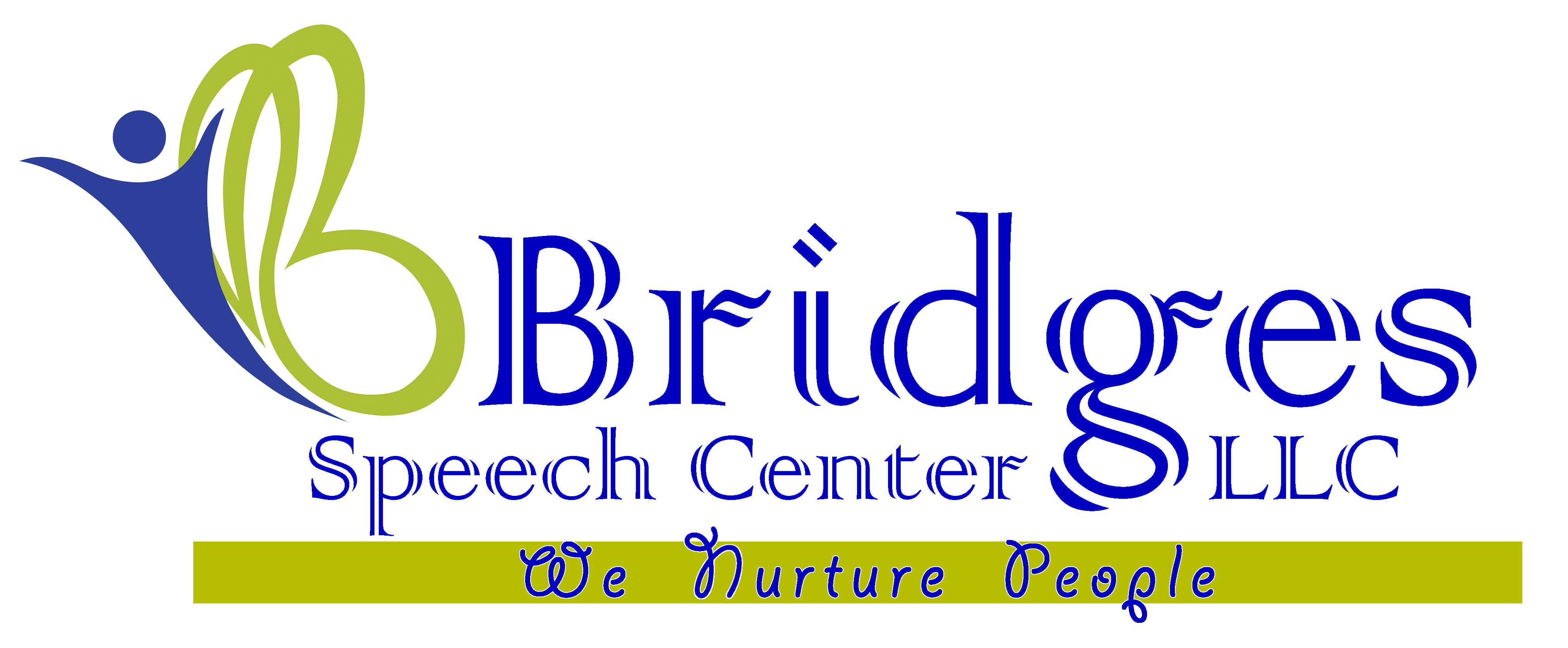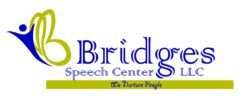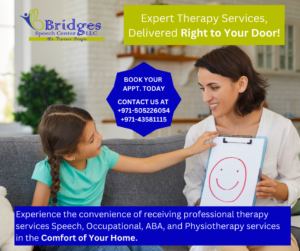- About Us
- Our Services
- Speech Therapy
- Speech and Language Therapies for Adults in Dubai
- Speech and Language Therapies for Children in Dubai
- Accent therapy
- Augmentative Alternative Communication (AAC) Therapy
- Articulation Speech Therapy
- Auditory Processing therapy/ Auditory verbal therapy
- Language Intervention: Speech Delay therapy
- Oral Motor Therapy
- Play Based therapy
- PROMPT/DTTC/RePT for Childhood Apraxia of Speech
- Social communication/Pragmatic language therapy
- Stuttering / Stammering therapy Program
- Spellography Program for Dyslexia
- Voice Therapy
- Home Care Services
- Feeding Therapy
- Physiotherapy
- Pediatric and Geriatric Physiotherapy
- Fall Prevention Programs for the Elderly
- Developmental Delay Treatment for Children
- Cerebral Palsy Management for Children
- Pediatric Orthopedic Conditions
- Osteoporosis Management for the Elderly
- Sports Injuries in Children
- Mobility and Balance Training for Elderly
- Joint Pain Treatment (Knee, Shoulder, Hip)
- Age-Specific Exercise Programs
- Coordination and Balance Exercises
- Orthopedic Physiotherapy
- Neurological Physiotherapy
- Sports Physiotherapy
- Cardiopulmonary Physiotherapy
- Women’s Health Physiotherapy
- Manual Therapy
- Therapeutic Exercise
- Pain Management
- Electrotherapy
- Hydrotherapy
- Ergonomic Consultation
- Tele-Physiotherapy Services
- Pediatric and Geriatric Physiotherapy
- Occupational Therapy
- Sensory Integration
- Clinical Psychology & Psychotherapy
- Cognitive Behavioral Therapy(CBT)
- ABA /Behavior Therapy
- Bridge Learning Program
- Group therapy
- Summer/Winter Program
- Telehealth Services
- Training Program/CEU
- Internship/ Observership
- Dynamic Movement Intervention (DMI)
- Speech Therapy
- Super Team
- Collaboration
- Training Course
- News/Blogs
- About Us
- Our Services
- Speech Therapy
- Speech and Language Therapies for Adults in Dubai
- Speech and Language Therapies for Children in Dubai
- Accent therapy
- Augmentative Alternative Communication (AAC) Therapy
- Articulation Speech Therapy
- Auditory Processing therapy/ Auditory verbal therapy
- Language Intervention: Speech Delay therapy
- Oral Motor Therapy
- Play Based therapy
- PROMPT/DTTC/RePT for Childhood Apraxia of Speech
- Social communication/Pragmatic language therapy
- Stuttering / Stammering therapy Program
- Spellography Program for Dyslexia
- Voice Therapy
- Home Care Services
- Feeding Therapy
- Physiotherapy
- Pediatric and Geriatric Physiotherapy
- Fall Prevention Programs for the Elderly
- Developmental Delay Treatment for Children
- Cerebral Palsy Management for Children
- Pediatric Orthopedic Conditions
- Osteoporosis Management for the Elderly
- Sports Injuries in Children
- Mobility and Balance Training for Elderly
- Joint Pain Treatment (Knee, Shoulder, Hip)
- Age-Specific Exercise Programs
- Coordination and Balance Exercises
- Orthopedic Physiotherapy
- Neurological Physiotherapy
- Sports Physiotherapy
- Cardiopulmonary Physiotherapy
- Women’s Health Physiotherapy
- Manual Therapy
- Therapeutic Exercise
- Pain Management
- Electrotherapy
- Hydrotherapy
- Ergonomic Consultation
- Tele-Physiotherapy Services
- Pediatric and Geriatric Physiotherapy
- Occupational Therapy
- Sensory Integration
- Clinical Psychology & Psychotherapy
- Cognitive Behavioral Therapy(CBT)
- ABA /Behavior Therapy
- Bridge Learning Program
- Group therapy
- Summer/Winter Program
- Telehealth Services
- Training Program/CEU
- Internship/ Observership
- Dynamic Movement Intervention (DMI)
- Speech Therapy
- Super Team
- Collaboration
- Training Course
- News/Blogs
Table of Contents
ToggleDysarthria Therapy Treatment in Dubai
- Home
- Our Services
- Dysarthria Therapy
Dysarthria therapy
Dysarthria therapy is a specialized approach designed to help individuals with dysarthria improve their speech intelligibility and communication abilities. Dysarthria is a motor speech disorder that results from neurological damage or impairment affecting the muscles responsible for speech production, such as the lips, tongue, vocal cords, and diaphragm. It can be caused by stroke, brain injury, Parkinson’s disease, or other neurological disorders. Dysarthria therapy addresses underlying muscle control issues and help individuals communicate more effectively. Here’s a detailed look at dysarthria therapy:
Assessment in Dysarthria Therapy
The initial step in dysarthria therapy is a thorough assessment by a speech-language pathologist (SLP). This evaluation focuses on understanding the specific aspects of the individual’s dysarthria, including:
- Speech Rate: How quickly the individual speaks, which can affect intelligibility.
- Voice Quality: Characteristics such as pitch, loudness, and resonance.
- Articulation: Clarity and precision of speech sounds.
- Breath Control: The ability to manage breathing effectively while speaking.
The assessment helps to identify the severity and type of dysarthria, guiding the development of a tailored treatment plan.
Individualized Treatment in Dysarthria Therapy
Therapy is customized to meet the specific needs of each individual, taking into account:
- Type and Severity of Dysarthria: Different types and severities require unique approaches.
- Communication Goals: Personal goals such as improving everyday conversations, professional interactions, or social engagements.
- Specific Needs: Addressing individual challenges, whether they are related to muscle strength, breath control, articulation, or prosody.
This tailored approach ensures that therapy is effective and relevant to the person’s daily life and aspirations.
Muscle Strengthening and Coordination in Dysarthria Therapy
Dysarthria often involves muscle weakness and reduced coordination, impacting speech production. Therapy includes:
- Strengthening Exercises: Activities to enhance the power of muscles used in speech, such as the lips, tongue, and jaw.
- Coordination Techniques: Exercises to improve the timing and precision of muscle movements.
- Targeted Drills: Specific practices focusing on problem areas, ensuring the muscles work together more effectively.
These exercises aim to improve overall motor control, leading to clearer and more intelligible speech.
Respiration in Dysarthria Therapy
Effective speech requires good breath control, which can be impaired in dysarthria. Therapy focuses on:
- Breath Support: Increasing lung capacity and endurance to support longer speech segments.
- Breath Control: Learning to manage airflow during speech to maintain volume and clarity.
- Breath Coordination: Synchronizing breathing with speech patterns, ensuring smooth and consistent speech.
These exercises help improve overall respiratory function, contributing to clearer and more sustained speech production.
Articulation and Phonation in Dysarthria Therapy
Dysarthria therapy includes specific exercises aimed at improving:
- Articulation: Enhancing the precision and clarity of speech sounds through targeted drills.
- Exercises: Repeating specific sounds, words, and phrases to practice clear articulation.
- Phonation: Addressing voice quality and pitch control to ensure a clear, pleasant, and varied speech tone.
- Techniques: Working on sustaining sounds, adjusting pitch, and modulating voice volume to improve overall voice quality.
These strategies help individuals produce more understandable and expressive speech.
Prosody in Dysarthria Therapy
Dysarthria can disrupt the rhythm, intonation, and stress patterns of speech, making it sound unnatural or monotonous. Therapy aims to improve prosody by:
- Rhythm Training: Practicing the natural timing and flow of speech.
- Intonation Exercises: Working on pitch variations to convey different meanings and emotions.
- Stress Patterns: Emphasizing certain syllables or words to improve speech naturalness and expressiveness.
These techniques help individuals achieve more natural-sounding speech, enhancing their overall communication effectiveness.
Oral Motor Exercises
Oral motor exercises focus on the muscles crucial for speech production, addressing both strength and coordination:
- Strengthening: Exercises like chewing activities aim to boost muscle power, enhancing the force needed for clear articulation and sustained speech.
- Coordination: Techniques such as tongue twisters or specific tongue, lip, and jaw movements refine muscle control, promoting smooth and precise speech movements. These exercises help synchronize the complex interplay of oral muscles required for fluent communication.
By targeting these fundamental aspects of oral motor function, individuals can improve their speech clarity, fluency, and overall communication effectiveness. These exercises are often prescribed by speech-language pathologists as part of a comprehensive treatment plan tailored to each individual’s specific needs and goals.
Speech Rate Control
Controlling speech rate is pivotal for ensuring speech clarity and comprehension. Therapeutic approaches encompass:
- Pacing Boards: Utilizing a visual aid, such as a pacing board, to regulate speech tempo. This tool assists individuals in maintaining a consistent pace, ensuring that words are enunciated clearly and comprehensibly.
- Tapping: Employing rhythmic hand taps to synchronize speech pace. By coordinating speech with tactile cues, individuals can establish and sustain a steady rate, fostering improved articulation and listener understanding.
These techniques empower individuals to manage their speech rate effectively, facilitating enhanced communication in diverse contexts. Through targeted practice and guidance, individuals develop the skills to articulate thoughts with precision and fluency, fostering more meaningful interactions and bolstering overall communicative success.
Augmentative and Alternative Communication (AAC)
In cases of severe speech impairment, Augmentative and Alternative Communication (AAC) methods serve as invaluable tools for facilitating communication. These methods encompass:
- Communication Devices: Advanced electronic devices that generate synthesized speech based on user input. These devices offer individuals with limited or absent speech the ability to express themselves by selecting words, phrases, or sentences from a pre-programmed vocabulary or through text-to-speech functionality.
- Symbols and Gestures: Non-verbal modalities utilized to convey messages effectively. This includes systems such as sign language, where hand shapes, movements, and facial expressions are employed to communicate, as well as visual aids like picture boards or communication books containing symbols or images representing words or concepts.
By harnessing AAC methods, individuals with severe communication challenges can overcome barriers to expression, participate more fully in social interactions, and engage meaningfully in various aspects of daily life. These techniques empower individuals to communicate their needs, preferences, and ideas, promoting independence, autonomy, and social inclusion.
Visual and Auditory Feedback
Visual and auditory feedback mechanisms are instrumental in aiding individuals to self-correct and refine their communication skills. These include:
- Mirrors: Offering real-time visual feedback by observing mouth movements during speech practice. Mirrors allow individuals to monitor articulatory precision, lip placement, and tongue positioning, facilitating the refinement of speech production.
- Recording Devices: Utilizing audio playback to enable self-assessment of speech quality and clarity. Individuals can record their speech and listen back to identify errors, inconsistencies, or areas for improvement, fostering greater self-awareness and facilitating targeted practice.
By integrating visual and auditory feedback into therapy sessions, individuals gain valuable insight into their speech production process, enhancing their ability to identify and address speech challenges independently. These tools empower individuals to actively engage in their own communication development, fostering confidence, proficiency, and autonomy in speech.
Functional Communication
Functional communication prioritizes the development of practical strategies to enhance everyday interactions. Key components include:
- Role-Playing: Engaging in simulated real-life scenarios to practice communication skills in a controlled environment. Through role-playing, individuals can rehearse expressing needs, desires, and ideas, fostering confidence and competence in navigating various social situations.
- Conversation Techniques: Implementing strategies to effectively manage and repair communication breakdowns during conversations. This may involve techniques such as paraphrasing, asking for clarification, or using visual cues to support understanding, empowering individuals to maintain fluid and meaningful interactions.
By focusing on functional communication strategies, individuals acquire the skills necessary to navigate social interactions with confidence and proficiency, ultimately enhancing their overall communicative competence and quality of life.
Progress Monitoring
Monitoring progress is essential in speech therapy to ensure effectiveness and tailor interventions accordingly. Here’s how it’s typically approached:
- Goal Setting: Collaboratively establishing clear and measurable objectives, both short-term and long-term, based on the individual’s needs and therapy priorities. These goals serve as benchmarks for tracking progress and guiding intervention strategies.
- Documentation: Maintaining thorough and accurate records of sessions, including progress notes, assessment results, and observations. Documenting progress allows for ongoing evaluation of therapy outcomes and identification of areas requiring further attention or modification of intervention strategies.
By regularly assessing progress and adjusting therapy goals and techniques as needed, speech-language pathologists can optimize the effectiveness of therapy interventions and support individuals in achieving their communication objectives.
Home Practice
Home practice is pivotal for reinforcing skills learned in therapy and accelerating progress. Here’s how it’s typically structured:
- Exercises: Assigning specific drills or activities tailored to individual goals and needs. These exercises target key areas of speech and language development and are designed to be practiced consistently, ideally on a daily basis, to promote skill retention and improvement.
- Techniques: Providing strategies and guidance on how to integrate practice exercises seamlessly into daily routines. This may involve incorporating exercises into everyday activities such as mealtime conversations, reading aloud, or engaging in structured practice sessions at designated times throughout the day.
By encouraging consistent home practice and offering practical strategies for implementation, individuals can maximize the benefits of therapy and make meaningful progress towards their communication goals. Regular practice outside of therapy sessions enhances skill acquisition, fosters confidence, and empowers individuals to actively participate in their own communication development.
Emotional and Psychological Support
Emotional and psychological support is integral to holistic dysarthria therapy, encompassing:
- Counseling: Offering empathetic guidance and therapeutic interventions to navigate the emotional complexities associated with dysarthria. Counseling sessions aim to help individuals manage feelings of frustration, anxiety, or self-consciousness related to speech difficulties, fostering resilience and emotional well-being.
- Support Groups: Facilitating connections with peers facing similar challenges, providing a supportive environment for sharing experiences, exchanging coping strategies, and offering mutual encouragement. Support groups offer validation, camaraderie, and a sense of belonging, empowering individuals to navigate their dysarthria journey with confidence and resilience.
Dysarthria therapy is a collaborative effort involving the individual, their SLP, and sometimes other healthcare professionals. The goal is to help individuals regain their ability to communicate confidently, be understood by others, and engage in social, vocational, and personal interactions. By addressing the underlying motor control issues, dysarthria therapy enables individuals to improve their speech clarity and regain a sense of autonomy and participation in their daily lives.
Make Appointment
Testimonials
What Parents Say
Send us an email if you wish to talk to any of them. For more reviews, please go to Google reviews.

My experience with bridges speech centre has been great. My child is attending OT in the center and we are happy and proud with the progress Mrs. Richa has made. The therapists are very supportive and knowledgable in selecting techniques to suit with our child's requirements . Their monthly review and evaluation is remarkable. I highly recommend bridges speech centre to anyone looking for an affordable and professional therapy for their child....

We were asked to consult a speech therapist for my son. As parents we were quite skeptical about this whole process. However, once my son started attending Dr Rupali’s sessions we noticed a drastic improvement in his speech. He used to speak only a few words but within the 1st four sessions he started speaking up-to 5 words sentences. I also learnt to manage my child’s emotions better with Dr Rupali’s guidance. She is very cooperative and patiently answer all questions.

We took our 21 month old daughter to Bridges speech center following her cleft palate surgery as she needed Speech therapy. Ms.Rupali was recommended to us by both our Pediatrician and ENT specialist. The staff at Bridges are qualified, warm and friendly. My daughter loved to attend the speech therapy sessions. Through various techniques and simulations provided during these sessions, I can see considerable improvement in my daughter's speech. Lastly I would say, no child is same, as parents we need to be patient and trust the process.

Rupali was excellent. In just couple of sessions she helped my child overcome difficulty in pronouncing ch and sh sound. Thanks very much.Highly recommend for children who will need assistance in speech therapy.
Blog & Article
Our Latest Blog & Articles
Developmental Delay Symptoms: Early Signs Parents Shouldn’t Ignore
Feeding Therapy and Developmental Delay Symptoms Parents Shouldn’t Ignore Mealtimes are one of...
Neurological disorders in kids
Parents hear the phrase neurological disorders in kids a lot during doctor visits,...


